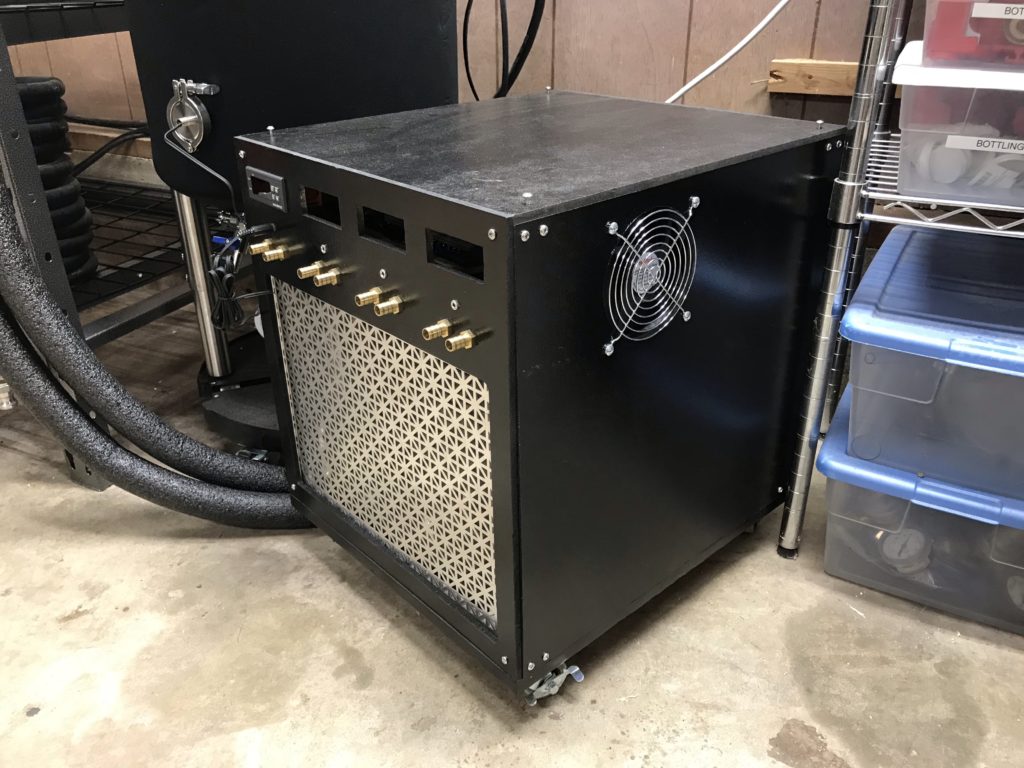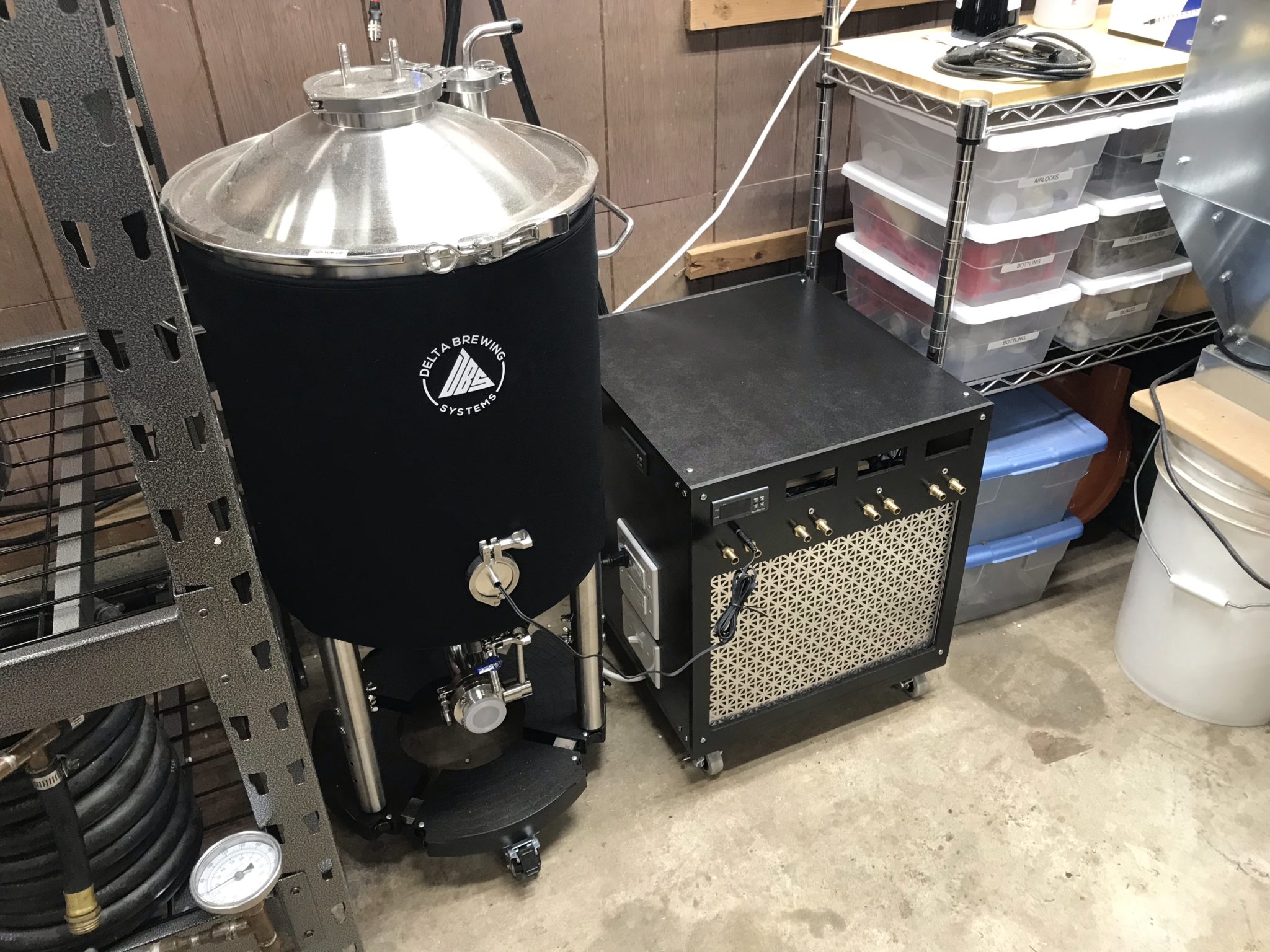After moving a few years ago and selling my fermentation chamber, I’ve been without proper temperature control for my beers. I’ve been fermenting them in the house—typically in the bathroom, which stays a bit warmer than the rest of the house. When the “shower beer” situation peaked at 25 gallons of beer, I realized I need to solve this problem sooner than later: I needed a way to ferment in the garage and control temperature. Time to build a DIY glycol chiller!
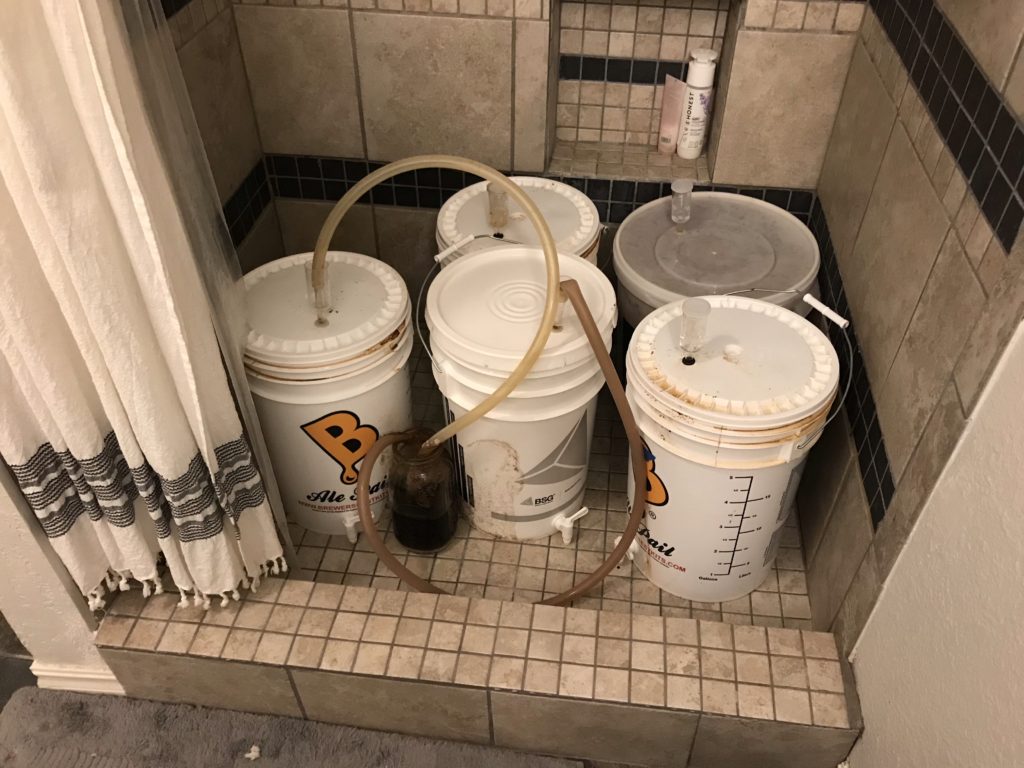
Whereas I had previously built a fermentation chamber to control temperature via heating and cooling the air, this time, I decided to step up my game and move into glycol chilling. This would require fermentors capable of supporting a chilling coil, as well as the glycol chiller and circulation system. After some research, I settled on the Delta FermTank 14 gallon fermentor.
For the chiller, I stuck to my guns and went the DIY glycol chiller route using a window A/C unit and a cooler. But not wanting to be outdone, I over-engineered this thing to be more compact than the other DIY solutions I’d seen.
Parts
- Midea 5000 BTU mechanical window air conditioner (Walmart)
- Igloo Legend 17-qt cooler (Home Depot)
- Circulation pump (Amazon)
- InkBird ITC-1000F temperature controller (Amazon)
- 1 gallon food grade inhibited propylene glycol (Amazon)
- 2 gallons distilled water
Build
Modifying the Air Conditioner
The first step was to cannibalize the A/C unit. I set the temperature and mode to maximum cooling capacity, then removed the knobs and exterior case.
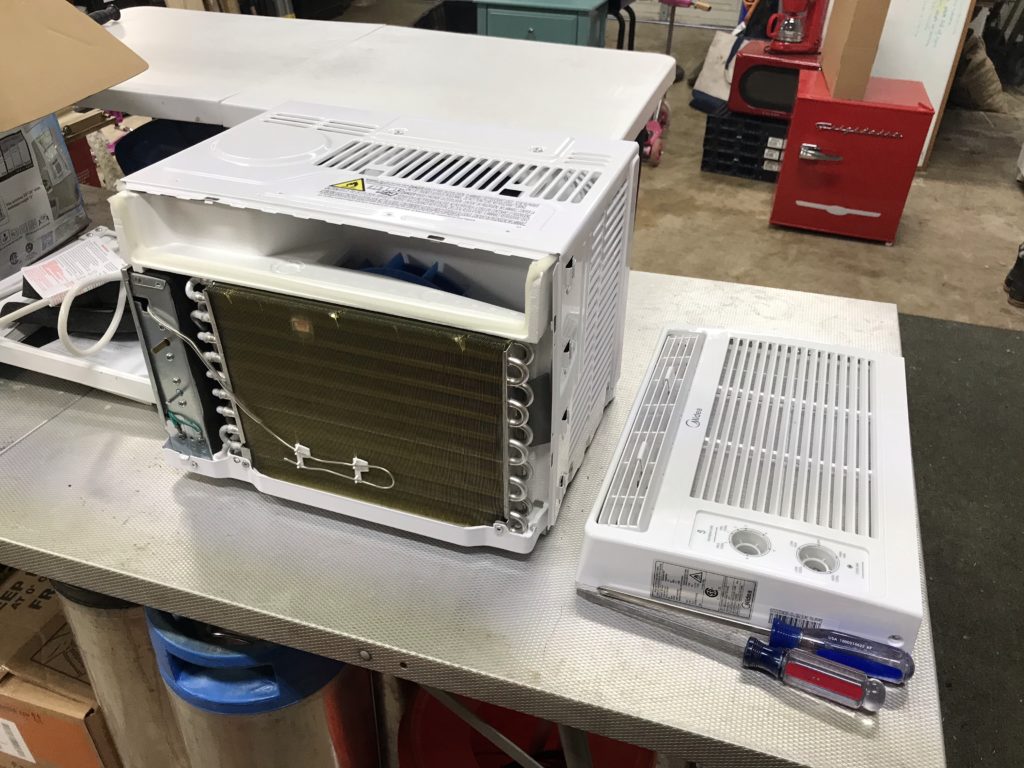
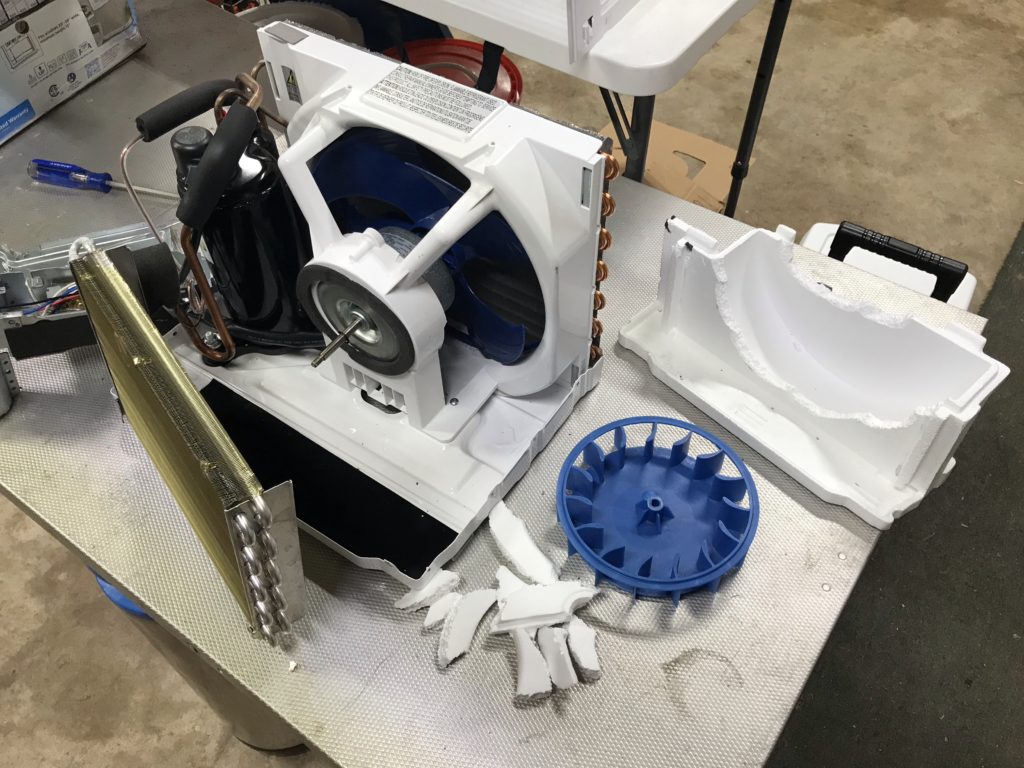
Then I went about slowly and carefully realigning the evaporator coil to fit into the cooler.
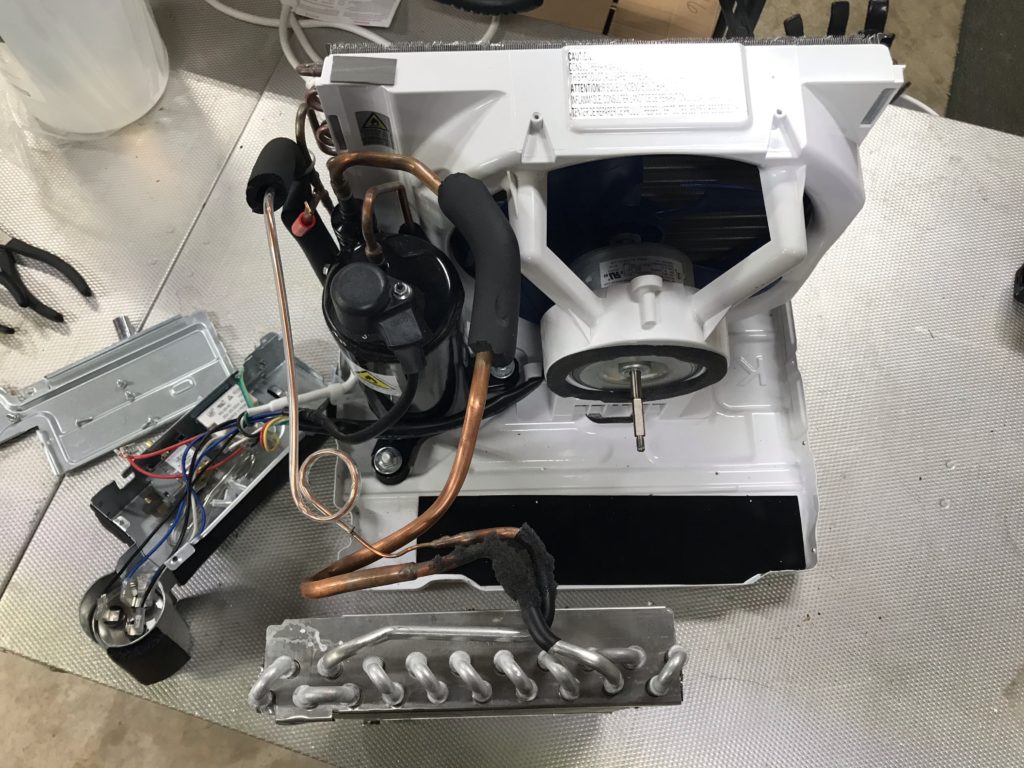
Bypassing the thermostat
To make the A/C run whenever the temperature controller told it to, I had to bypass the built-in thermostat. I did this by folding up the probe inside the wiring enclosure, then wiring the two leads from the thermostat control to each other, bypassing the control completely. The thermostat could be removed completely, but since it wouldn’t save me any space in the overall build, I left it where it was.
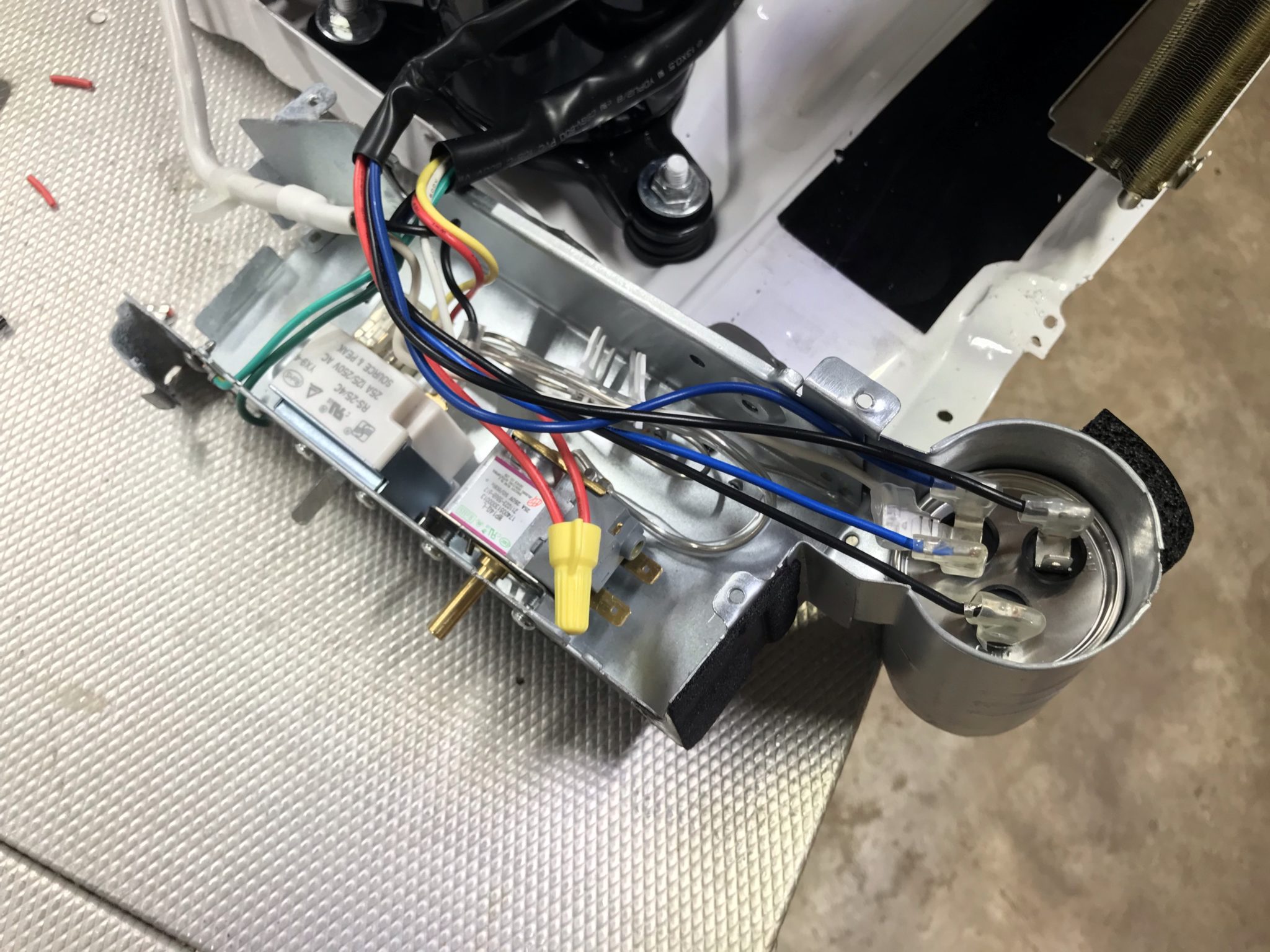
Closing the gap
I used a hacksaw to remove the excess shaft coming from the fan motor to save space. I also made several modifications to the metal base plate of the A/C unit to facilitate placement of the cooler. If I were to do this again, I might just remove the base plate entirely and make my own mounts for the compressor, fan, and wiring enclosure.
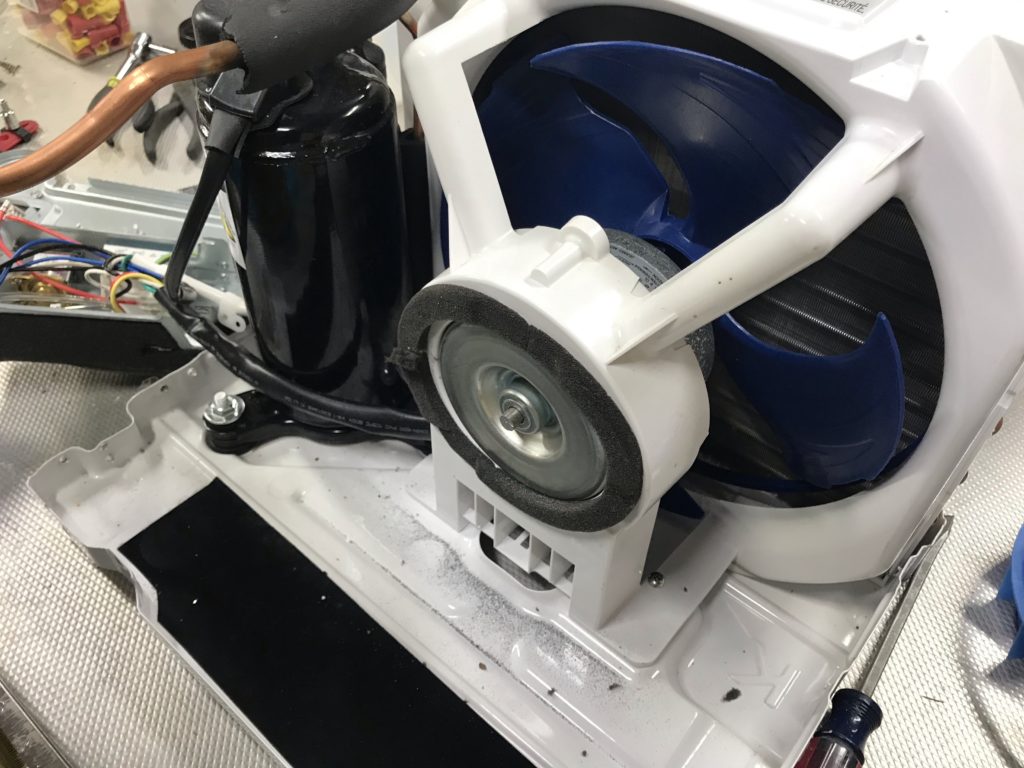
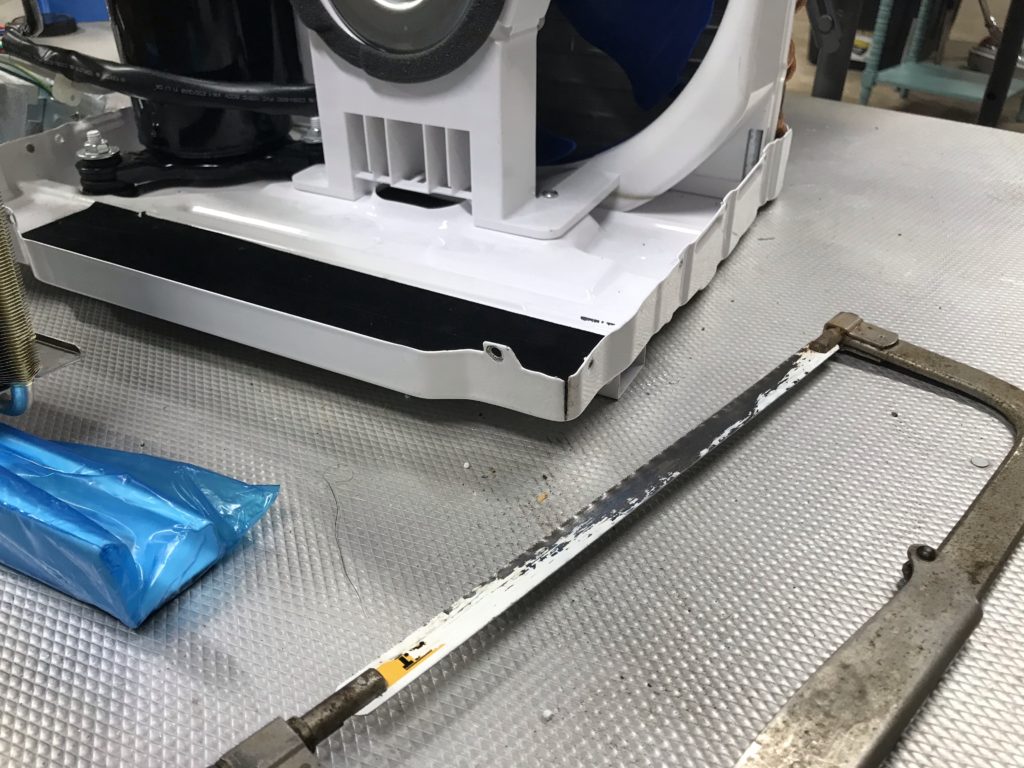
To fit the cooler as close as possible, I also modified the wiring enclosure so the start capacitor could be reoriented 90º. This took a bit of cutting with tin snips and adding screw holes, but wasn’t too difficult.
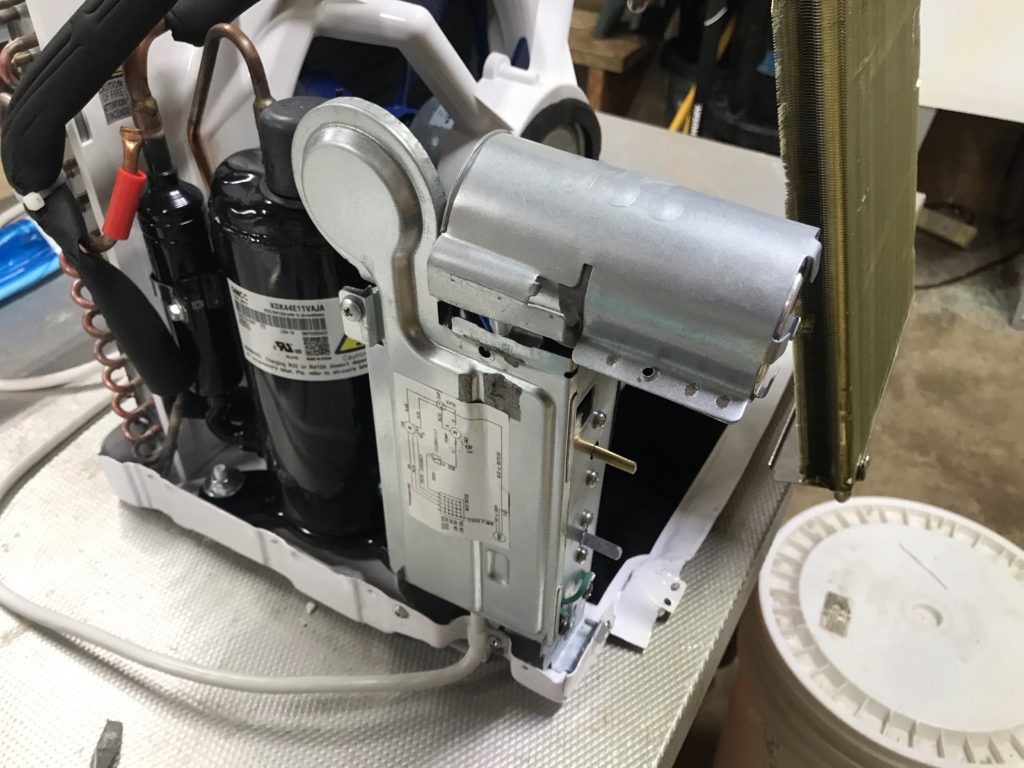
I shopped around for the smallest cooler I could find that would fit the coil. This would minimize both the amount of glycol needed and the chilling time. With the modifications to the A/C base plate, wiring enclosure, and fan motor shaft, I was able to snug the cooler up very closely in the A/C footprint.
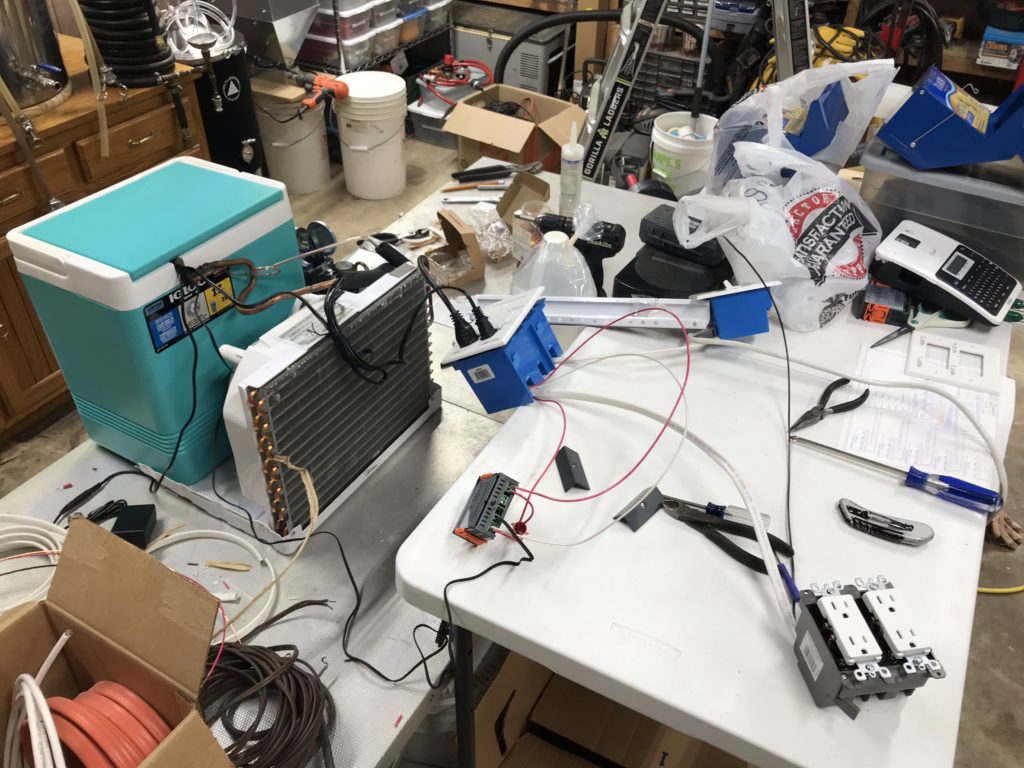
Wiring the chiller
The wiring for this DIY glycol chiller was a bit of an evolution. I wanted to keep it as flexible as possible while using easy-to-get components. I initially started out with house wiring components, but ended up using a combination of house wiring and stranded project wiring. To handle the majority of the wiring within the enclosure, I bought a spool of 14-gauge stranded wire and several terminal blocks.
The end result is a chiller with a light switch as the main power switch, standard outlets for powering external heaters for each fermentor, and internal terminal block wiring for running the A/C unit, glycol circulation pump, exhaust fan, and each fermentor’s pump, as well as all the temperature controllers.
For components like the circulation pump that had standard power cords, I trimmed the plug off and crimped on spade terminals to connect them directly to the terminal blocks. For components like each fermentor’s glycol pump that have a wall wart, I modified cheap extension cords in a similar manner, so the power adapter plugs into the extension cord, and the extension cord is wired directly to the terminal block.
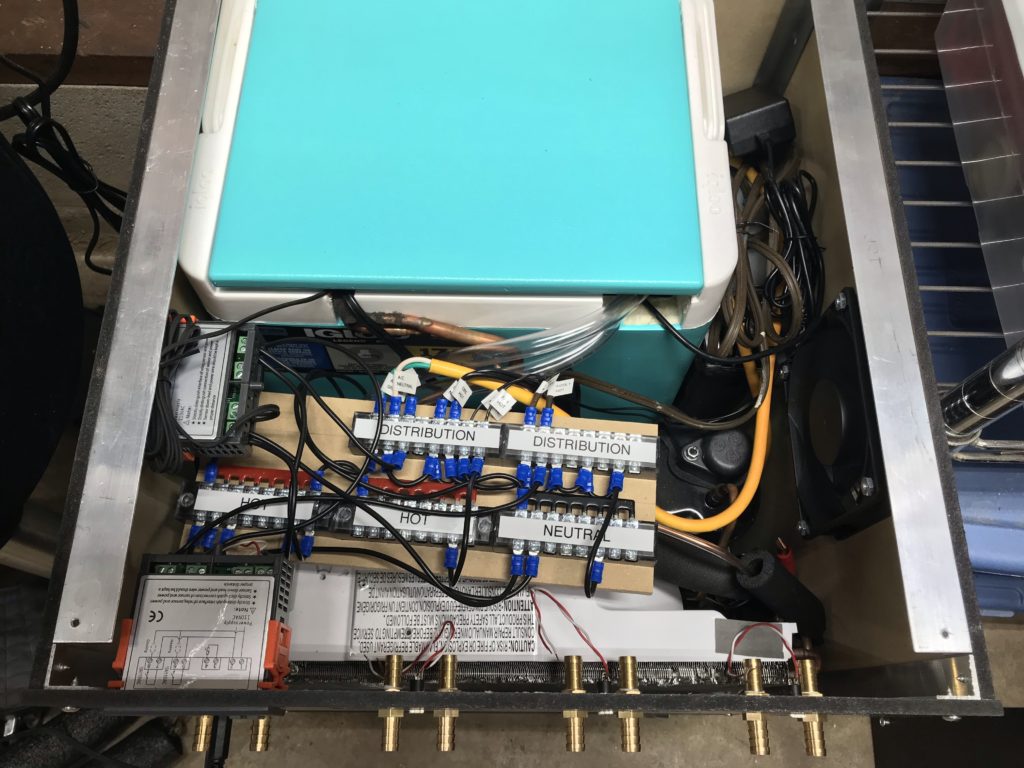
This is the final wiring diagram I arrived at after a few iterations and simplifying things as much as possible:
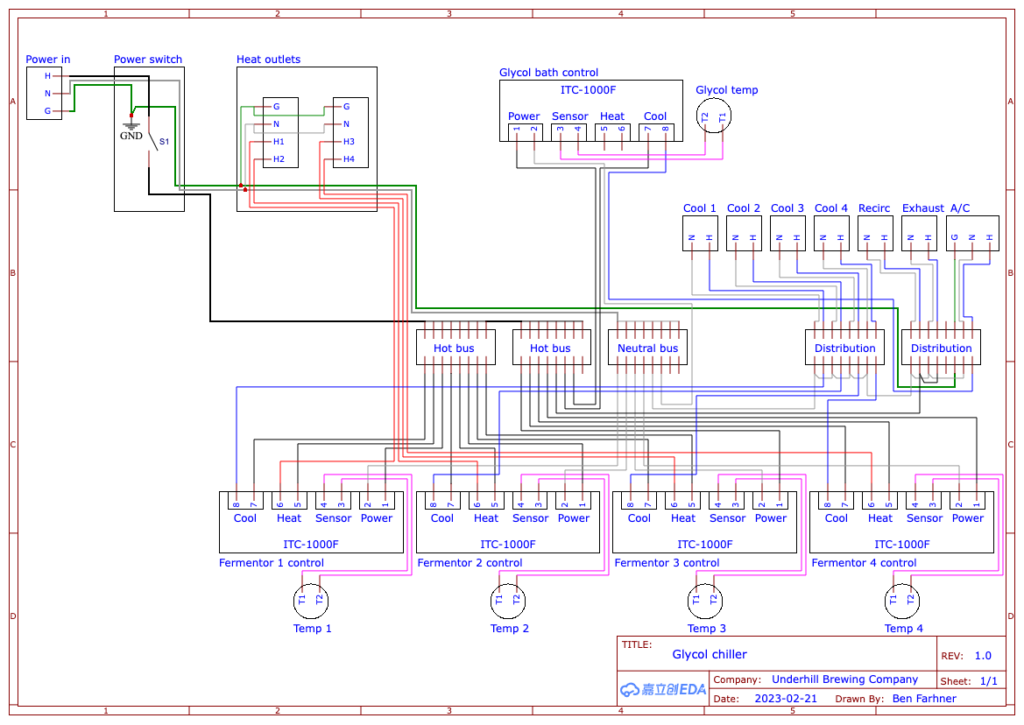
Building the Enclosure
I originally started building the enclosure from 3/4″ plywood that I had on hand, but quickly realized I needed something thinner to be able to panel-mount the components. I also wanted something that could be more easily removed for service. In the end, I used fiberboard panels mounted to aluminum angle brackets on a plywood base.
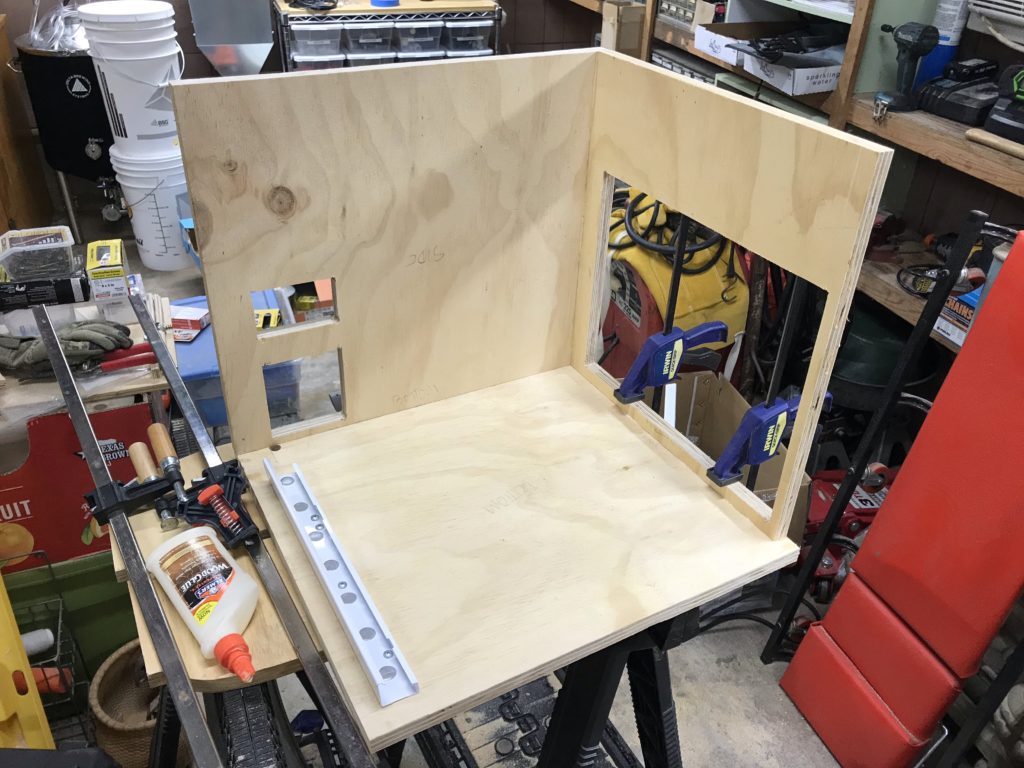
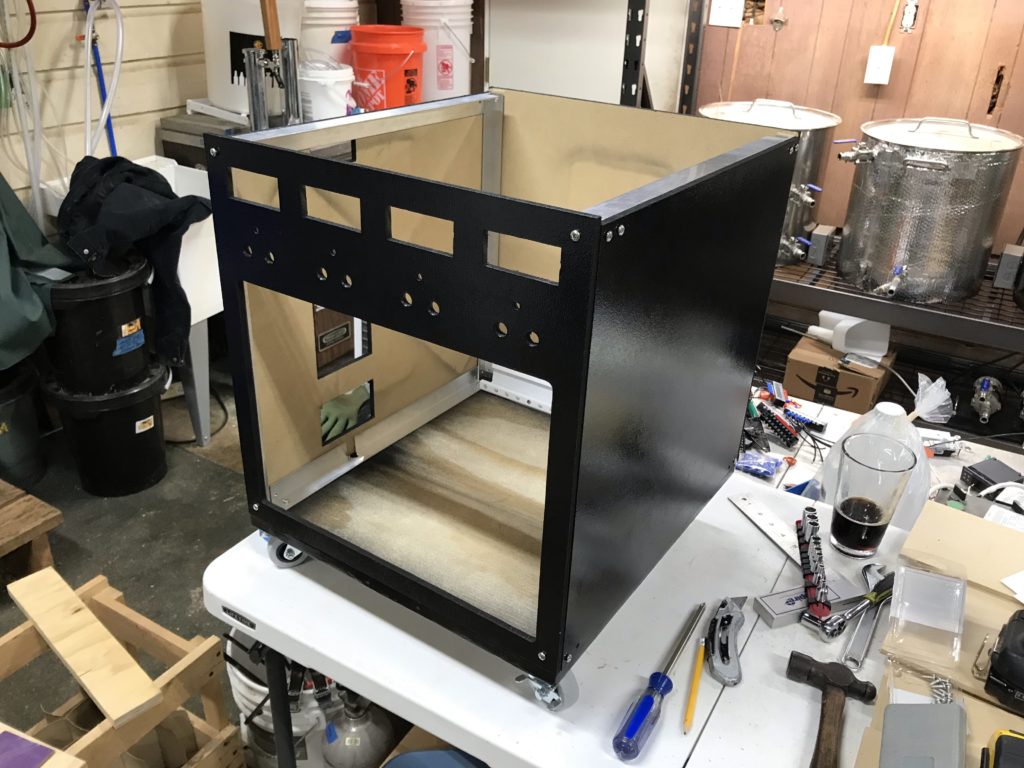
I designed the chiller to be able to support a total of 4 fermentors. I only have 1 right now, so I haven’t verified that it’ll work at that capacity, but as I expand I’ll be able to test it out. If it can’t handle 4 a time, I could modify the build and enclosure as necessary.
Since the temperature controllers support both heating and cooling, I designed this system with outlets for heaters. Each outlet is controlled separately, so each fermentor’s heating jacket can be plugged in constantly and only receive power when it needs to raise the temperature.
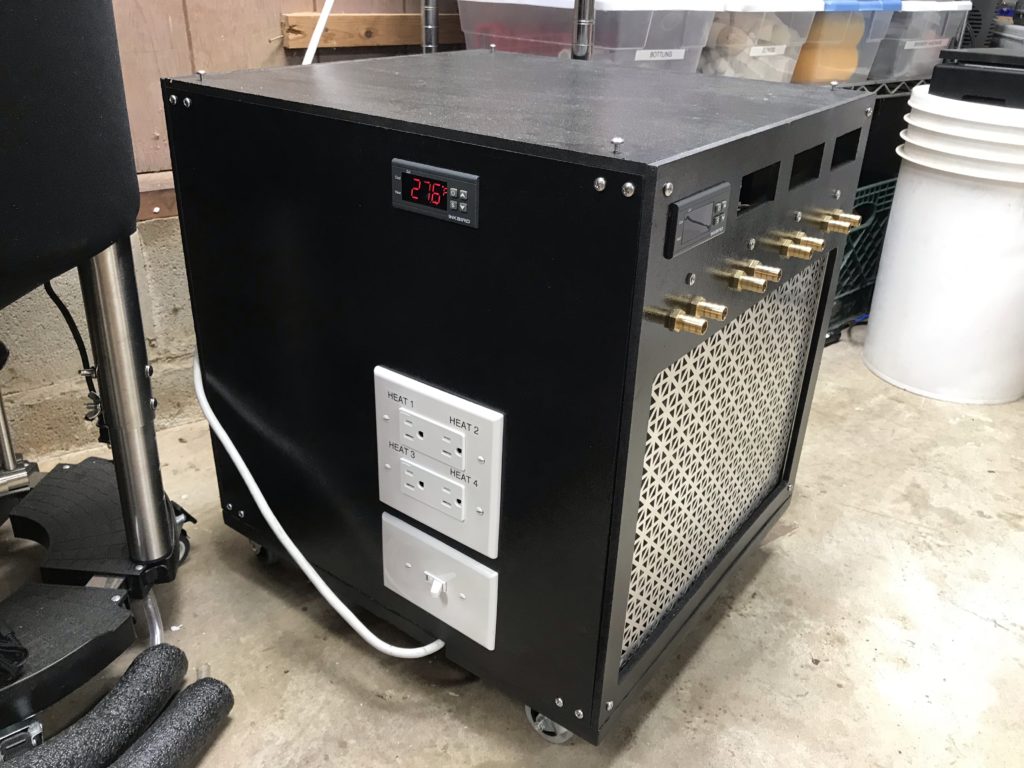
With the initial assembly of the enclosure, I realized there wasn’t enough airflow inside when the A/C was running. In fact, this led to the A/C fan motor overheating and melting its plastic mount! Fortunately, I was able to salvage it without any major impact to function. To solve the airflow issue, I added an exhaust fan that runs constantly, even with the A/C off. I also added a vent hole in the bottom of the enclosure to allow fresh air in.
